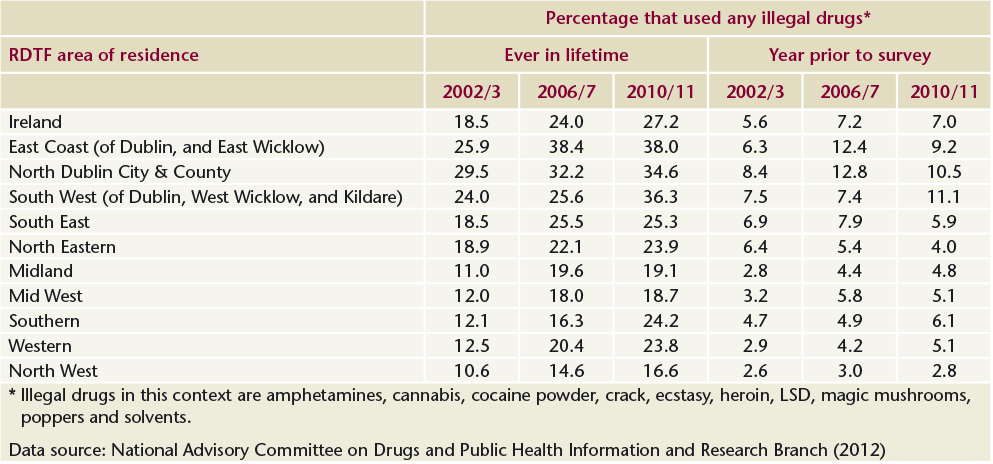Long, Jean and Horgan, Justine
(2012)
Drug use among the general population, by regional drugs task force area.
Drugnet Ireland,
Issue 43, Autumn 2012,
pp. 24-27.
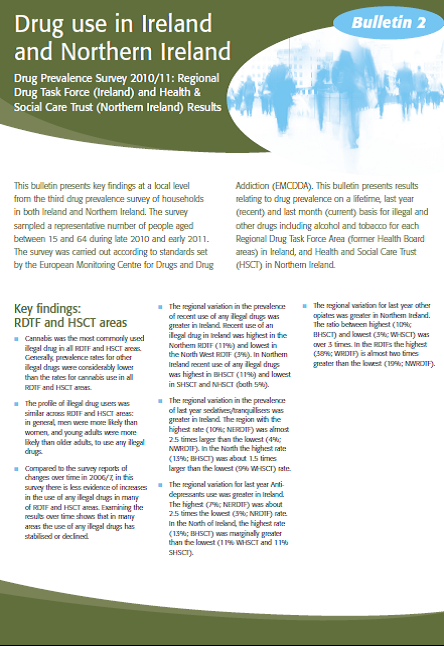
On 19 June a new bulletin was published outlining drug prevalence data by regional drugs task force (RDTF) area based on findings from the 2010/2011 National Advisory Committee on Drug’s general population survey on drug use.1 This is the third of these surveys, previously done in 2002/3 and 2006/7. Drug prevalence surveys of the general population are important in that they can shed light on the patterns of drug use, both demographically and geographically and, when repeated, can track changes over time. The Irish survey followed best practice guidelines recommended by the European Monitoring Centre for Drugs and Drug Addiction (EMCDDA). The commentary in this article concentrates on the prevalence of drug use in the year prior to the survey (described as ‘recent’ use) as this is the most useful measure for policy makers and service planners.
· Recent (or last-year) illicit drug use among the 15–64-year-old population stabilised or decreased marginally in most RDTF areas between 2006/7 and 2010/11, with no area showing a significant increase (Table 1). As expected, recent use is higher among men than women and higher among those aged 15–34 years than among their older counterparts.
· Cannabis was the most commonly reported illegal drug used in each of the RDTF areas, with rates of recent use ranging between 2.8% in the North West and 9.4% in North Dublin (Table 2 and Figure 1). Rates have stabilised or fallen in six RDTF areas (though not statistically significantly) and increased significantly in one area, the Western RDTF.
· Recent ecstasy use decreased somewhat in all RDTF areas (significantly so in the East Coast area only), with proportions ranging between 0% in the North West and 1.3% in North Dublin. (Table 3). Anecdotal reports of seizures and adverse events through early warning reports indicate that ecstasy use increased in late 2011 and 2012.
· Cocaine was the second most common illicit drug used in the year prior to the survey (Table 4). Its use was highest in the North Dublin, South West and East Coast RDTF areas. Recent cocaine use stabilised or decreased somewhat in nine areas and increased significantly in only one, the South West (SW Dublin, W Wicklow and Kildare).
· Recent use of new psychoactive substances was reported in all RDTF areas. The rate of use was highest in the East Coast (7.7%) and lowest in the North West (1.5%). It has been suggested that new psychoactive substances may take the place of other stimulants, which may account for the marginal decrease in cocaine and ecstasy use since 2006/7.2 Anecdotally, the use of new psychoactive substances appears to have decreased, which is evidenced by a reduction in the number of adverse events reported since the introduction of relevant legislation.
· Recent use of sedatives and tranquillisers (such as benzodiazepines and zopiclone, both prescribed and non-prescribed) has increased significantly in three RDTF areas (North Dublin, South West and North Eastern) and decreased significantly in the North West. Sedatives and tranquilisers are among the four most common drugs used in all RDTF areas (Figure 1).
· The definition of the category ‘other opiates’ was broadened in successive surveys, to be consistent with the definition used in Northern Ireland, and to include substances that contain codeine (an opiate). Consequently, data from the 2010/11 survey on recent use of ‘other opiates’ is not comparable with data for that category in previous surveys In 2010/11 the rate of recent use of other opiates is high in all RDTF areas, ranging from 19.1% in the North West to 37.5% in the Western area (Figure 1).
Table 1 Proportion of respondents 15-64 years who reported lifetime and last-year use of illegal drugs, by regional drugs task force area of residence
Table 2 Proportion of respondents 15-64 years who reported lifetime and last-year use of cannabis, by regional drugs task force area of residence
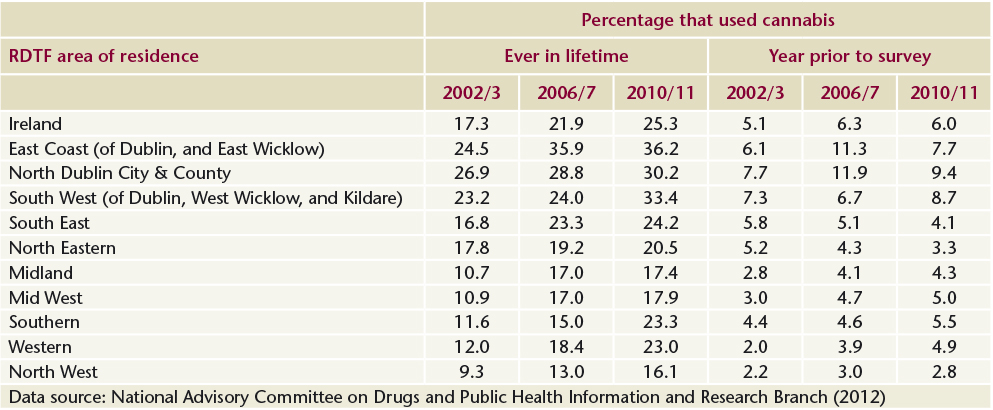
Table 3 Proportion of respondents 15-64 years who reported lifetime and last-year use of ecstasy, by regional drugs task force area of residence
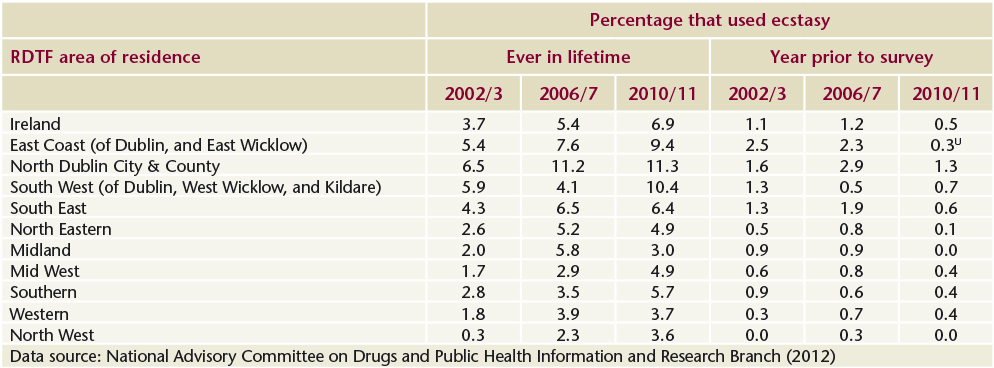
Table 4 Proportion of respondents 15-64 years who reported lifetime and last-year use of cocaine, by regional drugs task force area of residence
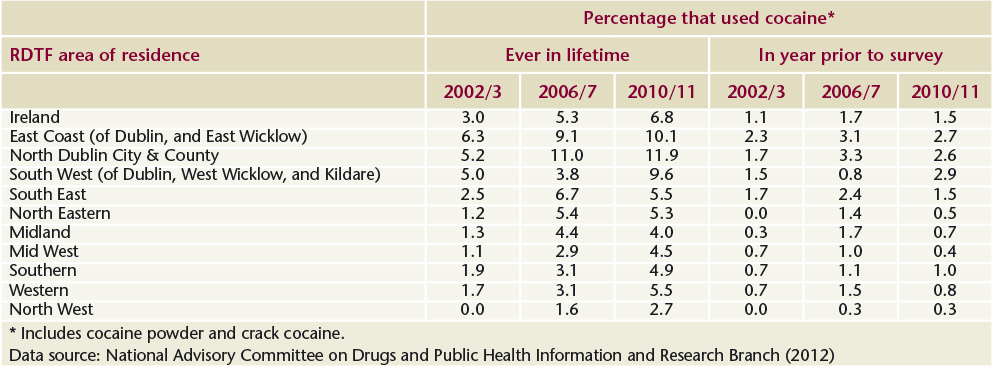
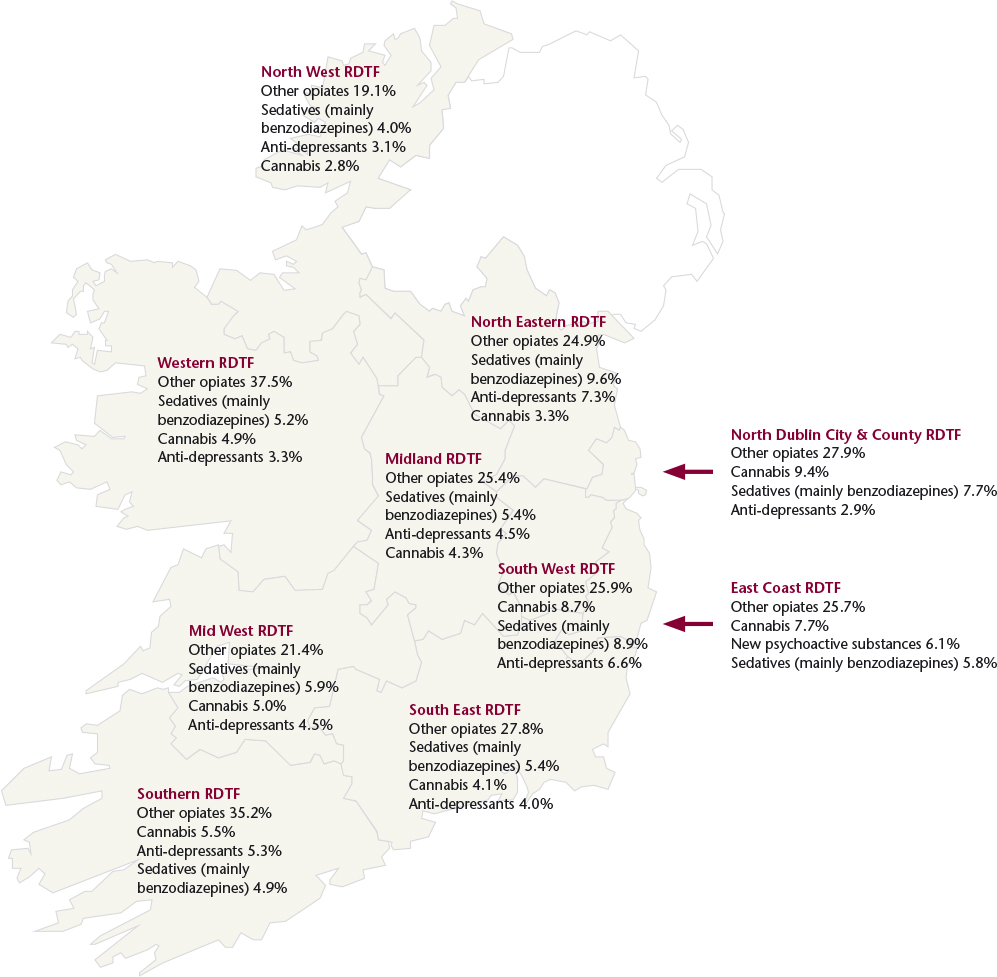
Figure 1 Last-year prevalence among the general population of the most commonly used legal and illegal drugs (excluding alcohol), by regional drugs task force area, 2010/11
Data source: National Advisory Committee on Drugs and Public Health Information and Research Branch (2012)
1. National Advisory Committee on Drugs and Public Health Information and Research Branch (2012)
Drug use in Ireland and Northern Ireland. Drug Prevalence Survey 2010/11: Regional Drug Task Force (Ireland) and Health and Social Care Trust (Northern Ireland) Results. Bulletin 2. Dublin: National Advisory Committee on Drugs.
www.drugsandalcohol.ie/177532. Horgan J (2011)
Drug use in Ireland and Northern Ireland. First results from the 2010/11 Drug Prevalence Survey. PowerPoint presentation of findings on publication of Bulletin 1 of the survey. Dublin: National Advisory Committee on Drugs.
www.drugsandalcohol.ie/16450
